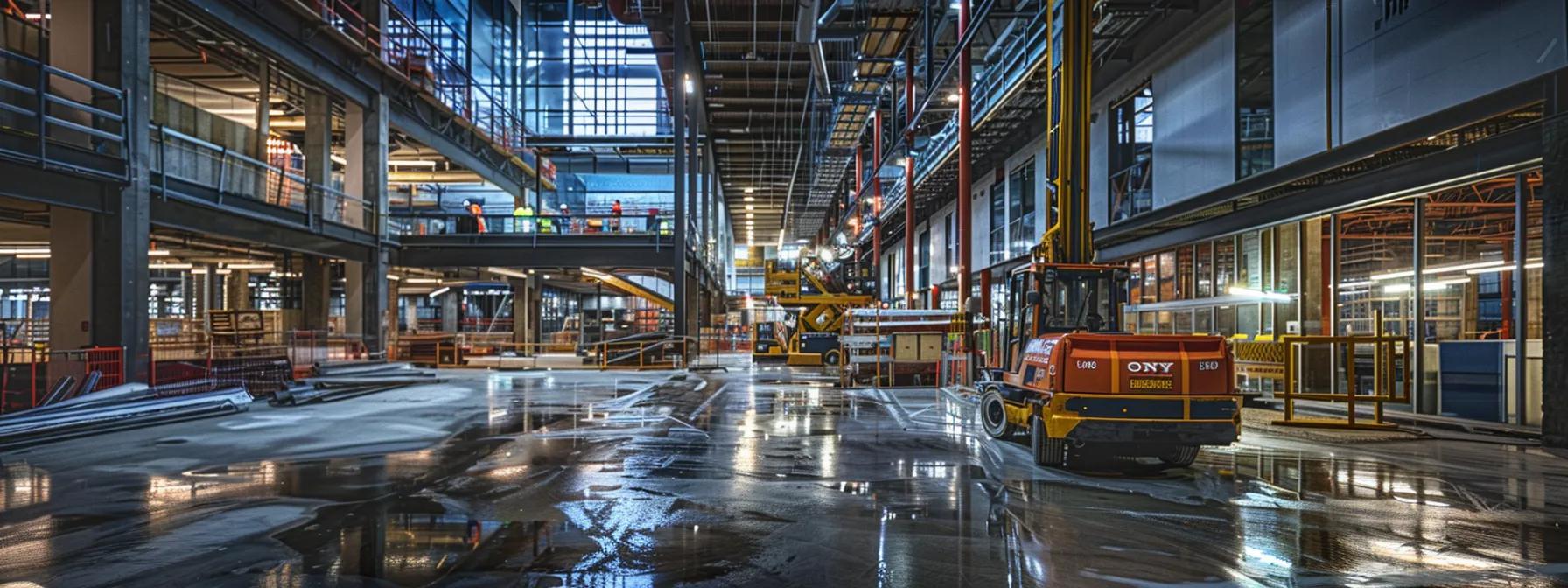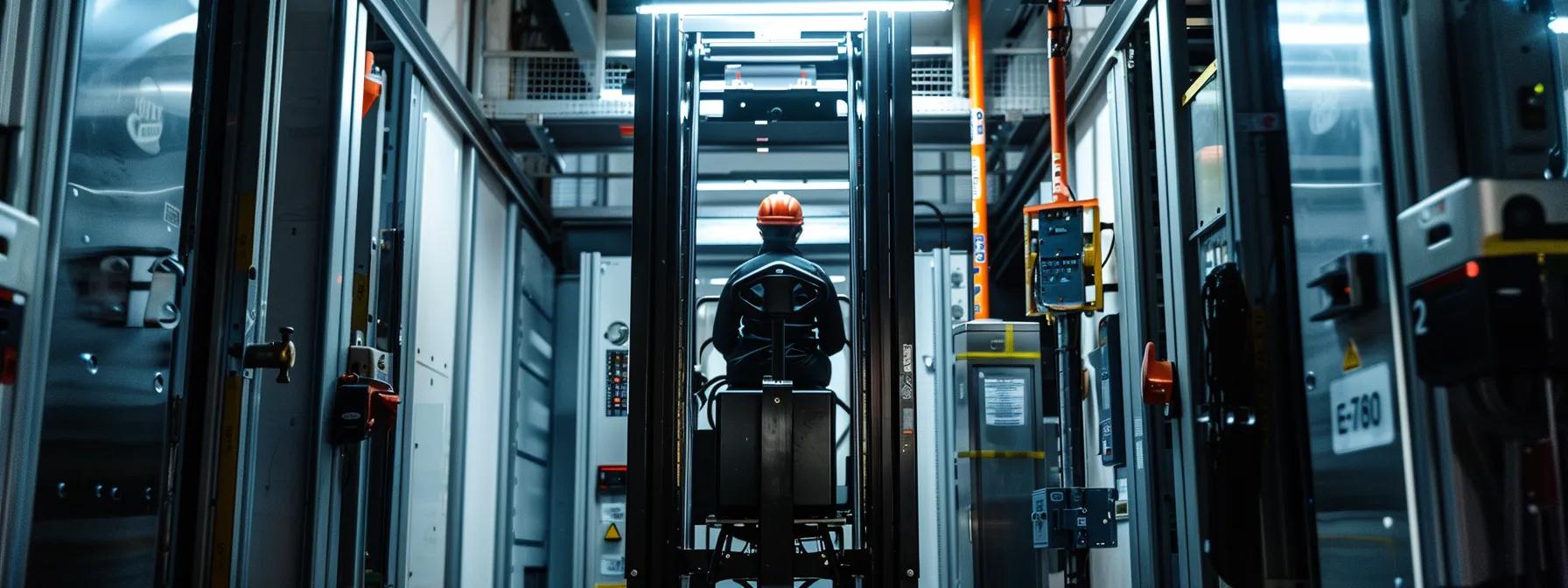Table Of Contents:
- Safeguarding Workers: OSHA Guidelines for Manlifts
- 1. Understand OSHA Regulations on Manlift Safety Procedures – What are the key mandates?
- 2. Implement Safe Operating Practices for Manlifts – How can consistent procedures boost safety?
- 3. Train Employees on Manlift Safety and Usage – What benefits does proper training provide?
- 4. Ensure Proper Maintenance of Manlifts – How does routine maintenance reduce risks?
- 5. Enhance Safety With Suitable Personal Protective Gear – What role does PPE play?
- 6. Foster a Safety-Oriented Work Environment – How does culture improve safety outcomes?
Safeguarding Workers: OSHA Guidelines for Manlifts
Manlift operations demand strict adherence to OSHA safety regulations to ensure workers’ protection and operational efficiency. In commercial construction and heavy equipment rental, understanding regulatory requirements, safe operating practices, and proper maintenance is essential. This article details six key OSHA guidelines for manlift safety—from understanding regulations to maintaining equipment and training staff—with an emphasis on practical examples, research-backed insights, and company-specific support from Innovative Reach, the leader in renting Atrium Lifts that fit through standard 34″ doors.
1. Understand OSHA Regulations on Manlift Safety Procedures – What are the key mandates?

OSHA regulations improve manlift safety by establishing stringent guidelines for operation, training, and maintenance. In 2023, OSHA’s standards required that manlift operations meet defined criteria for fall protection, emergency procedures, and load-bearing capacities. These regulations focus on aspects such as ensuring that aerial lifts and aerial work platforms have guardrails, emergency descent controls, and proper access platforms to reduce risks. Compliance with these standards reduces the rate of injuries by up to 35% in heavy equipment operations, according to research published by the U.S. Department of Labor.
For instance, OSHA mandates that each manlift or aerial work platform must undergo a pre-operational inspection, include a fall arrest system, and be operated by certified personnel. This regulatory framework not only safeguards workers but also enhances the reliability of the equipment under demanding construction scenarios.
Understanding these regulations is foundational. When managers implement OSHA protocols, they create an environment where hazards are minimized, ensuring that every operator benefits from structured guidelines and evidence-based safety measures.
Transition Tease
Understanding these mandates lays the groundwork. Next, learn how to implement safe operating practices that adhere to these requirements.
2. Implement Safe Operating Practices for Manlifts – How can consistent procedures boost safety?
Implementing safe operating practices improves safety by standardizing procedures across all manlift operations. Clear directives – such as performing daily inspections, using lockout/tagout methods, and establishing designated work zones – reduce accidents and improve site productivity. Modern studies have shown that rigorous adherence to standardized practices can cut down workplace injuries by as much as 28%.
Safe operating practices include checking hydraulic levels, ensuring all controls are responsive, and confirming stability on uneven terrain before ascent. Companies like innovative reach emphasize that every manlift rental comes with an OSHA-trained ground operator, reinforcing that safety begins with meticulous operational discipline.
Strict procedural adherence not only meets regulatory demands but can directly correlate with decreased downtime and enhanced worker confidence during complex projects.
Adhering to safe practices is crucial. Up next, explore how training employees on manlift safety further solidifies these safety measures.
3. Train Employees on Manlift Safety and Usage – What benefits does proper training provide?
Training employees on manlift safety increases operational proficiency by equipping them with the necessary skills and knowledge to manage risks. OSHA requires that operators receive hands-on training on aspects such as emergency descent protocols, proper maneuvering, and the use of fall arrest systems. Research from the National Safety Council indicates that well-trained personnel can lower accident rates by nearly 40% compared to untrained crews.
Comprehensive training programs include classroom sessions, on-site demonstrations, simulation drills, and certification courses. Innovative Reach reinforces this approach by providing an OSHA-trained ground operator with every rental, ensuring that best practices are observed at every step. The training curriculum emphasizes not only technical operation but also situational awareness and hazard identification.
This systematic approach to training ensures that employees can quickly respond to unexpected hazards, contributing to an overall safer work environment.
The importance of training is evident. The next step is understanding proper maintenance of manlifts for optimal performance and hazard prevention.
4. Ensure Proper Maintenance of Manlifts – How does routine maintenance reduce risks?
Ensuring proper maintenance improves safety by identifying wear and tear before failures occur. Regular maintenance procedures, including hydraulic fluid checks, component lubrication, and structural integrity inspections, are critical to the longevity and safe operation of manlifts. A study in the Journal of Construction Engineering (2022) revealed that proactive maintenance can decrease equipment failure rates by over 30%, significantly cutting downtime.
Maintenance checklists provided by OSHA require daily, monthly, and annual inspections. For instance, operators must verify that all emergency controls function properly and that all safety barriers remain intact. Innovative Reach’s man lifts are backed by a service plan that includes regular inspections by certified technicians, ensuring machines are not only operational but also compliant with current safety standards.
Routine maintenance assures both regulatory compliance and efficient operational performance, ultimately reducing risks associated with sudden equipment malfunctions.
Maintenance is vital for reliability. Moving forward, learn how using appropriate personal protective equipment enhances safety during manlift operations.
5. Enhance Safety With Suitable Personal Protective Gear – What role does PPE play?
Enhancing safety with suitable personal protective equipment (PPE) supports worker protection by minimizing injury during manlift operation. OSHA specifies the use of safety harnesses, helmets, non-slip footwear, and high-visibility vests as essential components of any manlift operation. Studies from the Occupational Safety and Health Review Commission have demonstrated that proper PPE usage reduces injury severity by up to 50% in high-risk environments.
Appropriate PPE not only safeguards individuals but also instills confidence that hazards are managed effectively. For example, even when operating at heights up to 95′ (as offered by Innovative Reach’s extended-reach man lifts), workers are protected by equipment designed to arrest falls and dissipate impact energy. Making sure that every operator is outfitted with the proper gear is both an OSHA requirement and a critical component of operational best practices.
This measure is integral to creating a safety-first environment, where each worker’s personal protection is prioritized as a line of defense against unforeseen accidents.
Protection begins with gear. Lastly, discover how fostering a safety-oriented work environment drives continuous improvement in manlift operations.
6. Foster a Safety-Oriented Work Environment – How does culture improve safety outcomes?
Fostering a safety-oriented work environment improves safety outcomes by establishing a culture where every employee is accountable for hazard prevention. OSHA encourages organizations to integrate safety meetings, continuous improvement programs, and employee feedback systems into their daily routines. Recent surveys by the American Society of Safety Professionals show that companies with defined safety cultures report up to 45% fewer incidents overall.
Elements of a safety culture include regular safety briefings, clear communication channels, visible leadership endorsement, and reward programs for safe behavior. Innovators like Innovative Reach prioritize safety by delivering not only state-of-the-art man lifts but also personalized safety training and a dedicated OSHA-trained ground operator to every site. This comprehensive focus ensures that every member of the team—manager or operator—feels responsible for maintaining high safety standards.
A positive safety culture enhances morale, promotes accountability, and ensures regulatory adherence, making it indispensable for safe manlift operations and overall construction site productivity.
What OSHA regulations apply to manlift operations?
OSHA mandates include pre-operational inspections, fall protection systems, and proper certification for operators.
How often should manlifts be maintained?
Daily, monthly, and annual inspections are recommended to ensure continued safe performance.
What training is required for manlift operators?
Operators must complete OSHA-approved training, including hands-on sessions and periodic refreshers.
Which personal protective equipment is essential for manlift work?
Essential PPE includes safety harnesses, helmets, non-slip footwear, and high-visibility clothing.
How does a safety-oriented work culture reduce incidents?
A proactive safety culture improves communication, accountability, and continuous hazard assessment, dramatically reducing incidents.
Manlift safety is achieved when OSHA regulations, safe operating practices, continuous employee training, rigorous maintenance, appropriate PPE use, and a proactive safety culture work in harmony. Each element drives measurable improvements in safety outcomes and operational efficiency. Companies like Innovative Reach demonstrate that integrating these guidelines into daily operations not only complies with standards, but also elevates performance. Embracing these measures is essential for a secure and productive work environment.

